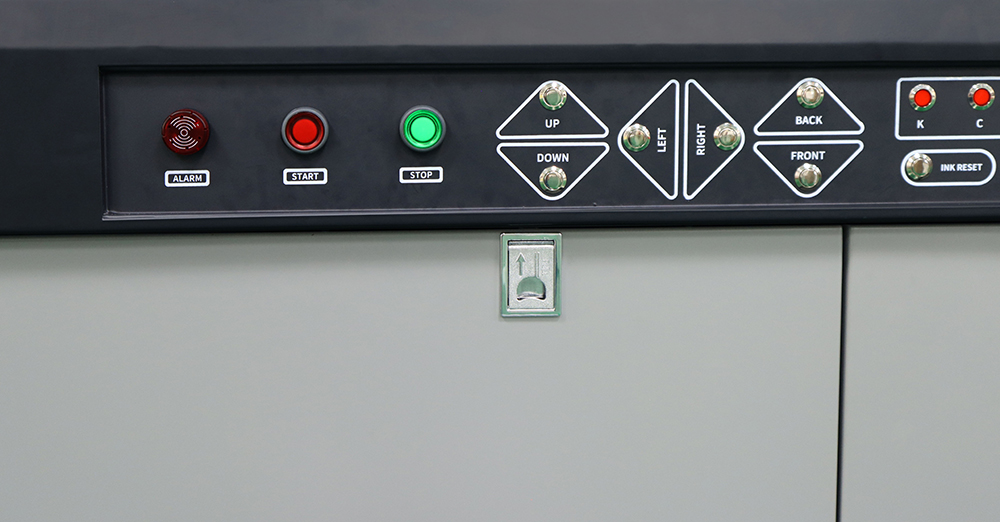UV Flatbed Printer: How to Maximize Printer Uptime and Efficiency?
UV Flatbed Printer: How to Maximize Printer Uptime and Efficiency?
In the realm of digital printing, UV flatbed printers have revolutionized the way we produce high-quality, vibrant prints on a wide array of materials. These versatile machines offer unparalleled precision and speed, making them a staple in industries such as advertising, signage, packaging, and more. However, to truly harness their full potential, it is crucial to understand how to maximize printer uptime and efficiency. This article delves into the strategies and best practices that can help you optimize your UV flatbed printer’s performance, ensuring consistent, high-quality output while minimizing downtime and operational costs.

1. Understanding UV Flatbed Printer Technology
UV flatbed printers utilize ultraviolet (UV) light to instantly cure ink as it is applied to the substrate. This process allows for immediate drying, enabling the printer to produce durable, scratch-resistant prints that can withstand harsh environments. The key components of a UV flatbed printer include the print head, UV lamps, ink delivery system, and the control software. Each of these elements plays a vital role in determining the printer’s overall efficiency and uptime.
2. Regular Maintenance: The Foundation of Efficiency
Regular maintenance is the cornerstone of maximizing printer uptime and efficiency. A well-maintained printer is less prone to breakdowns, produces higher-quality prints, and operates at optimal speed. Here are some essential maintenance tasks:
Clean the Print Head: The print head is the most critical component as it directly affects print quality. Regularly cleaning it prevents ink buildup and clogged nozzles, ensuring smooth ink flow.
Inspect UV Lamps: UV lamps are responsible for curing the ink. Over time, they can lose intensity, affecting print quality and increasing curing time. Regularly inspect and replace lamps as needed to maintain efficient curing.
Ink System Maintenance: Keep the ink delivery system clean and free from contaminants. Regularly check for leaks, clogged filters, or ink stagnation, which can lead to print quality issues.
Software Updates: Ensure your printer’s control software is up to date. Manufacturers often release updates that improve printer performance, fix bugs, and introduce new features.
3. Optimize Print Settings for Efficiency
Efficient print settings can significantly impact printer uptime and productivity. Here are some adjustments to consider:
Resolution and Print Mode: While higher resolutions offer better print quality, they also increase print time. Assess your project requirements and choose the appropriate resolution and print mode to balance quality and speed.
Ink Usage: Optimize ink usage by adjusting the ink density settings. Over-saturation can lead to longer curing times and increased ink consumption, while under-saturation may compromise print quality.
Curing Parameters: Fine-tune the UV lamp’s power and curing speed according to the substrate and ink type. Incorrect curing settings can lead to ink adhesion issues or overheating, affecting printer uptime.
4. Efficient Workflow Management
Efficient workflow management is crucial for maximizing printer uptime. Here are some strategies to streamline your operations:
Job Queuing: Use job queuing features to organize and prioritize print tasks. This ensures that the printer is continuously working on high-priority jobs, minimizing idle time.
Batch Processing: When possible, group similar print jobs together. This reduces the need for frequent adjustments and minimizes printer downtime between jobs.
Automated Workflows: Invest in software that automates pre-press tasks such as file preparation, color management, and job scheduling. This reduces manual errors and streamlines the production process.
5. Environmental Factors
Environmental conditions can significantly impact printer performance. Consider the following:
Temperature and Humidity: Maintain a stable temperature and humidity level in the print room. Extreme temperatures or high humidity can affect ink viscosity, print quality, and printer components.
Dust and Particulates: Keep the printer area clean and dust-free. Dust can accumulate on the print head and other sensitive components, leading to print quality issues and potential breakdowns.
6. Operator Training and Skill Development
A skilled operator can make a substantial difference in printer uptime and efficiency. Regular training ensures that operators are proficient in:
Printer Operation: Operators should be familiar with all printer functions, including troubleshooting common issues.
Ink and Substrate Knowledge: Understanding how different inks and substrates interact can help operators make informed decisions that optimize print quality and efficiency.
Software Mastery: Comprehensive knowledge of the printer’s control software enables operators to exploit advanced features that enhance productivity.
7. Monitor and Analyze Printer Performance
Regularly monitoring and analyzing printer performance data can identify inefficiencies and potential issues before they escalate. Utilize printer logs and analytics tools to track:
Uptime and Downtime: Monitor printer uptime and downtime to identify patterns or trends that may indicate maintenance needs or workflow inefficiencies.
Ink Usage and Costs: Analyze ink usage to identify opportunities for optimization, such as adjusting ink density settings or exploring more cost-effective ink options.
Print Quality: Regularly inspect print quality to ensure consistency. Any deviations could signal the need for maintenance or adjustments to print settings.
Conclusion
Maximizing UV flatbed printer uptime and efficiency is a multifaceted approach that involves regular maintenance, optimized print settings, efficient workflow management, consideration of environmental factors, operator training, and performance monitoring. By implementing these strategies, you can ensure that your UV flatbed printer operates at its full potential, delivering high-quality prints consistently while minimizing downtime and operational costs. Remember, a well-maintained and efficiently operated printer is a valuable asset that can significantly contribute to your business’s success.
